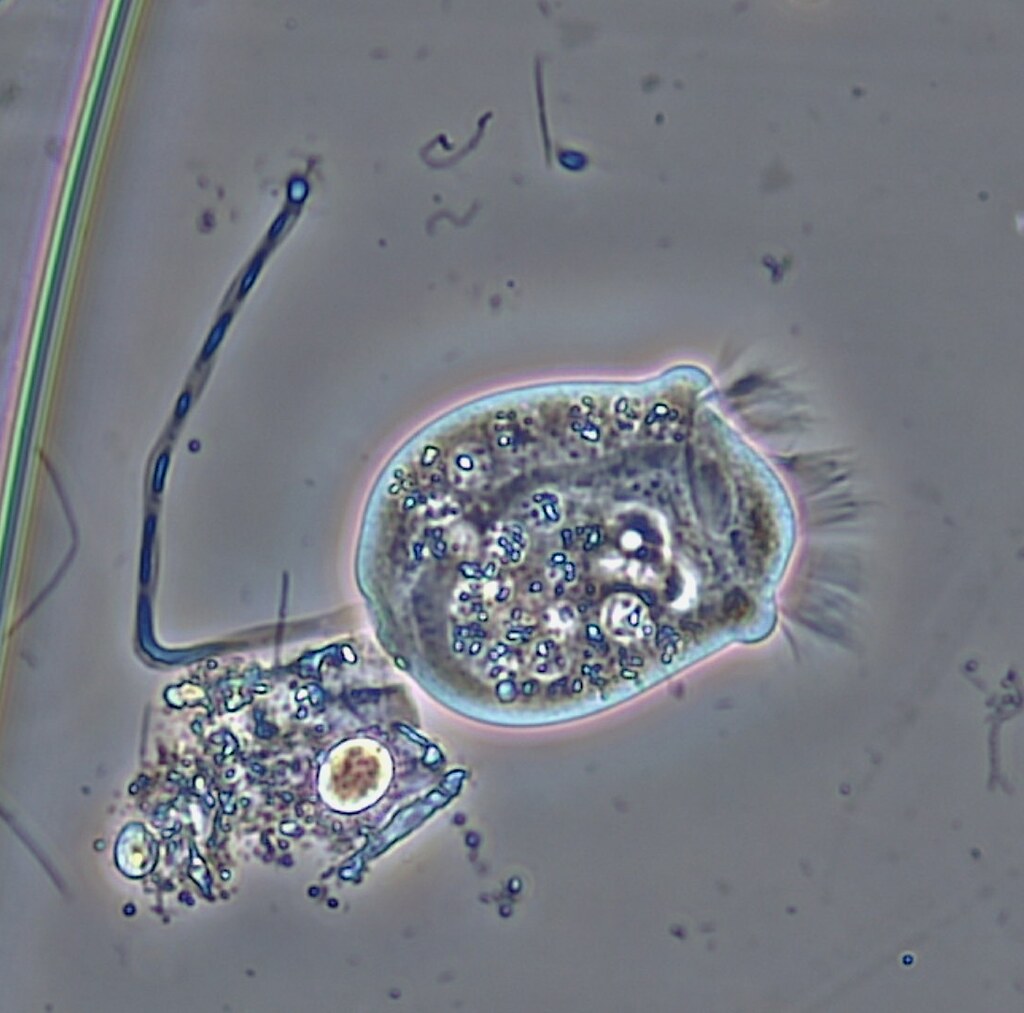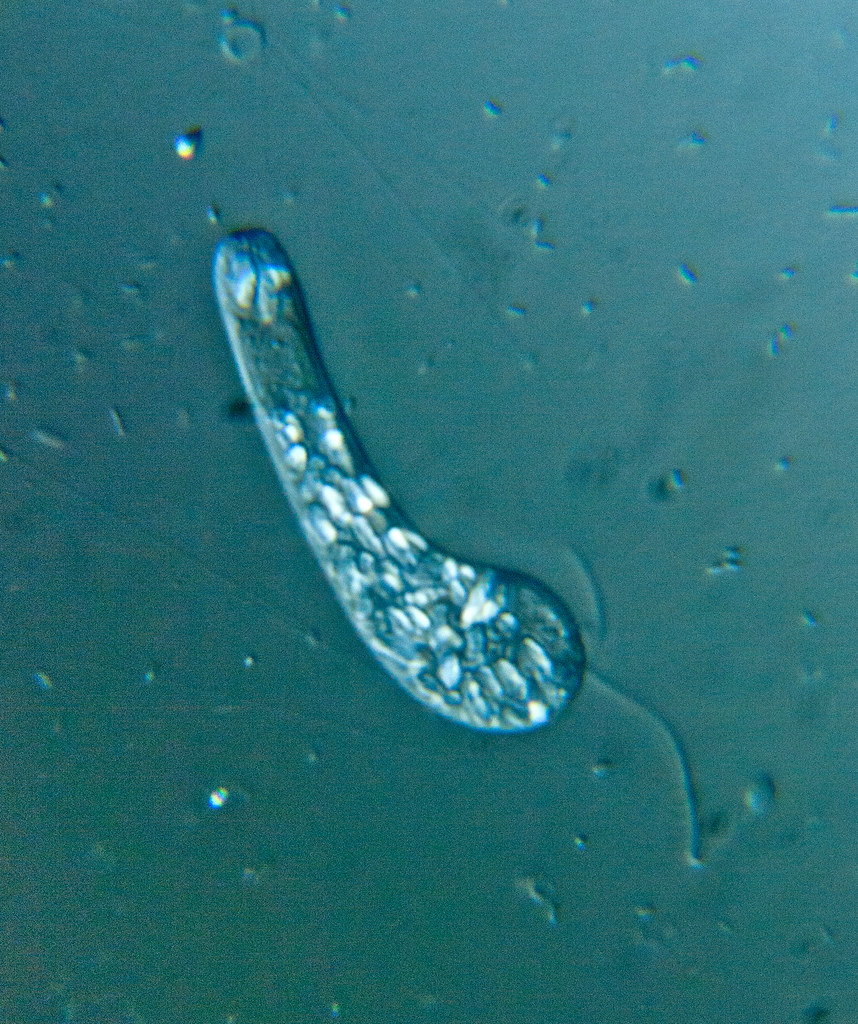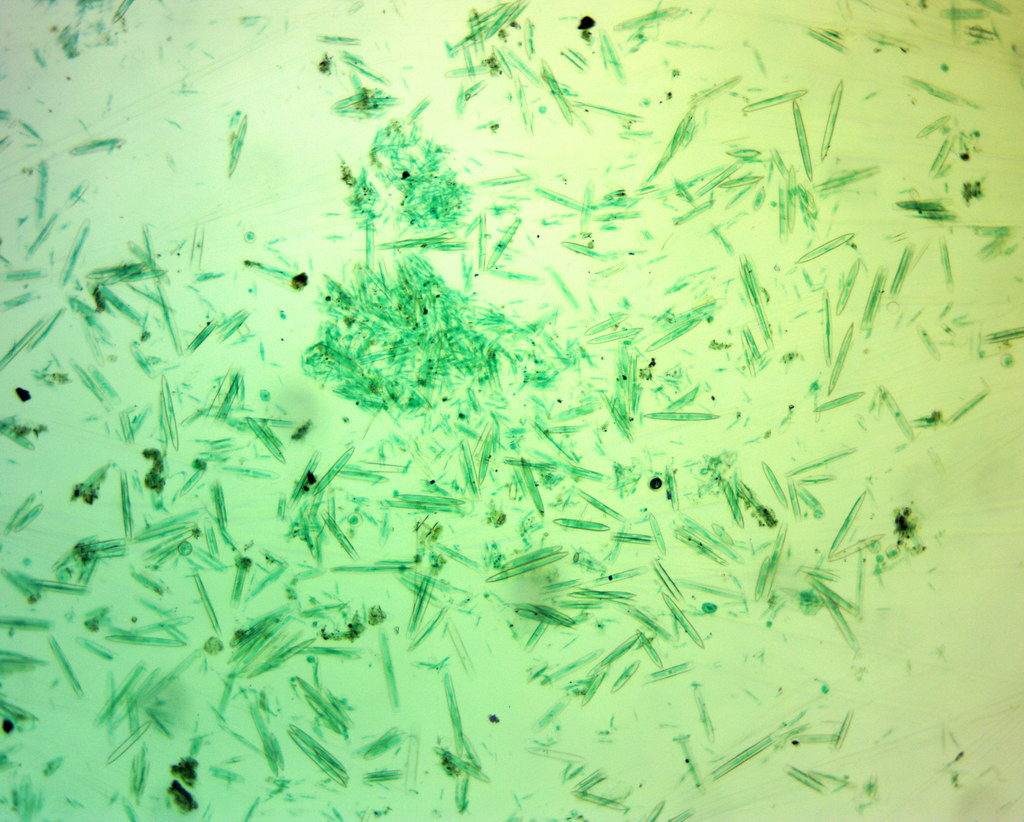 "flowing rock" by paul bica is licensed under CC BY 2.0
"flowing rock" by paul bica is licensed under CC BY 2.0
Definition of Magma
The definition of magma is a mixture of molten or semi-liquid rock located in magma chambers under the earth's crust. This mixture is usually composed of four materials, namely:
- The body of magma in the form of a super hot liquid, also called melt (melt / melt).
- Minerals crystallized by molten magma
- Solid rock that enters the magma liquid coming from the walls of the magma chamber, as well as
- Gaseous substances dissolved into magma
Although magma is basically confined in a magma chamber, magma can move so that it reaches the earth's surface. Liquid magma that comes out to the earth's surface is called lava. While magma that has cooled and crystallized is called igneous rock .
Magma is a very dynamic ultra hot liquid. With a temperature of about 700 to 1,300 degrees Celsius, magma is a very fluid and dynamic substance. Magma can undergo changes (evolution) into new, different landforms. Changes that occur physically and chemically are caused by changes in the environment they experience during movement.
Magma Formation Process
Magma comes from the magma chamber which is located between the layers of the Earth's mantle and the Earth's crust. Earth's mantle and crust are generally solid. So the presence of molten magma between the two is very important for geologists to study the structure and morphology that occurs in the Earth's mantle. Usually magma activity is also influenced by geological activity that occurs in the earth's mantle layer below it.
The origin of magma is formed in several different ways, this is due to differences in structure, temperature and pressure between the layers of the earth's mantle and the earth's crust. There are three processes of magma formation, namely decompression melting, heat transfer and flux melting .
Decompression melting
Decompression melting is the upward movement of the hot components of the Earth's mantle. This hot material rises to the top of the lower pressure through heat convection. According to the laws of physics, pressure is directly proportional to the melting point. Regions with lower pressure also have lower melting points. Decompression (a decrease in pressure) above it makes the solid mantle layer melt into magma
Decompression melting generally occurs in divergent areas, where tectonic plates are separated from each other. The movement of the plate causes the magma beneath it to move to fill the empty space above it. The magma then solidifies to form igneous rock that composes new layers of the Earth's crust.
Decompression melting also occurs in the mantle plume, which are passageways consisting of hot material from the Earth's core to the lower-pressure crust. When below sea level, this mantle plume, called magma, pushes the magma to the ocean floor. This process that took place over millions of years formed a mid-ocean volcanic island.
Heat Transfer
Magma can also form when heat energy from molten rock intrudes into the cold crust of the Earth. As this molten rock solidifies, it also spreads heat around it. As a result, the surrounding rock melts and forms magma.
Heat transfer occurs in convergent areas, where tectonic plates move and collide. The molten rock beneath a tectonic plate affects the cold layer above it. This process generates heat and creates magma. Over millions of years, the magma beneath this subduction zone changes to form volcanic arcs, which are a series of active volcanoes in a convergent area.
Flux Melting
Flux melting occurs when water and carbon dioxide are added to rock. These two compounds cause rock to melt at a lower temperature than normal. Flux melting creates magma in these areas, which when viewed from the temperature and pressure should still be in the form of rock (not melted).
Like Heat Transfer, Flux melting also occurs in convergent areas (subdiction zones). In this case, the water covering the seabed in the subduction zone will lower the melting point of the Earth's mantle. This causes magma to rise to the surface.
Magma Movement
Magma can move out of the magma chamber that is between the Earth's mantle and the Earth's crust. The movement of magma occurs in two main ways, namely magma intrusion and magma extrusion .
Magma Intrusion
Magma intrusion is the process of penetrating magma through cracks or gaps in the surface layer of the lithosphere, but not reaching the earth's surface. Magma intrusion usually occurs due to increased pressure from the gases that make up the magma itself.
Here are the types of Magma Intrusion:
Flat intrusion (sill or plate intrusion) : Magma infiltrates between two rock layers, horizontally, and parallel to the rock layers.
lakolith : Magma that breaks through between the Earth's uppermost layers. The shape is similar to a convex lens or macaroon.
Folds : Rocks resulting from magma intrusion that infiltrate and freeze between the folds
Diathermic : The hole (pipe) between the magma chamber and the volcanic crater. The shape is like an elongated cylinder.
Magma Extrusion
Magma extrusion is the release of magma from the bowels of the earth towards the earth's surface. Extrusion of magma is a process commonly known as volcanic eruption. This process can occur because of a gap, crack or hole that leads to the earth's surface plus an increase by the gases that make up the magma. Magma extrusion can occur on land or at sea.
Following are the types of Magma Extrusion:
1. Linear Extrusion
Linear extrusion occurs when magma comes out through cracks or elongated faults to form a series of volcanoes. For example, the Laki Volcano in Iceland.
2. Extrusion Area
Area extrusion occurs when the magma is close to the earth's surface, so that the magma melts out in several places in a certain area. For example Yellow Stone National Park in the United States which covers an area of up to 10,000 km2.
3. Central Extrusion
Central Extrusion occurs when magma escapes through a hole (magma channel) and forms separate mountains. For example Mount Krakatoa, Mount Vesucius, etc.
Magma can move infiltrate to a place with a lower density (low density), for example in sedimentary rock structures. When cooling occurs, magma remains frozen. This magma intrusion process is called pluton .
There are several forms of pluton, such as dikes and xenoliths. Dikes are slabs of magma (not yet melted) that infiltrate another rock body. A xenolith is a type of rock trapped in another rock. Most xenoliths are crystalline fragments (rocks) from deep within the earth that are trapped in magma during cooling.
The most common way of movement of magma to the earth's surface is through lava. Lava from this volcanic eruption can be in the form of a "fountain" consisting of thick molten rock and other material that melts and moves like a river. Lava will freeze to form volcanic rock and volcanic glass.
When an explosive volcanic explosion occurs, the movement of magma can reach the atmosphere. Magma in the air then solidifies to form tephra . Tephra is often called volcanic ash. As it falls back to earth, tephra can collect or combine with other rocks. For example, pumice stone.
Properties of Magma
The properties of magma are divided into two, the first is the physical properties of magma and the chemical properties of magma. The physical properties of magma include viscosity, specific gravity and temperature of magma, while the chemical properties of magma include volatile compounds, non-volatile compounds and other elements called trace elements.
Viscosity is the viscosity or tendency not to flow. A liquid with a high viscosity will have a lower tendency to flow than a liquid with a low viscosity. The same is true of magma.
Magma viscosity is determined by SiO2 content and magma temperature. The higher the SiO2 content, the lower the viscosity or the thicker it is. On the other hand, the higher the temperature, the lower the viscosity. Thus, basaltic magma flows more easily than andesitic or rhyolitic magmas. Likewise, andesitic magma flows more easily than rhyolitic magmas.
Magma Content and Classification Type
Magma is liquid rock that is inside the Earth. This hot magma has a lot of substances in it. However, research on the content in magma can only be studied through the igneous rocks that make up the magma. This is because of the impossibility of taking samples of magma that is in the bowels of the Earth and its very hot nature.
Some of the content in magma is known that it is a chemical substance. The composition that composes this magma is very complex. Approximately 99% of this magma is composed of 10 chemical elements, including silicon (Si), titanium (Ti), aluminum (AI), iron (Fe), magnesium (Mg), calcium
(Ca), sodium (Na), potassium (K), hydrogen (H) and oxygen (O). Those are some of the main ingredients possessed by magma. These contents can still be varied so as to produce a content that combines with one another.
Although there are many elements that make up magma, in general we will find that SiO2 dominates in the composition of magma. If we percentage the amount, then SiO2 makes up the most magma, which is more than 50% of the magma's weight. Then 44% of the weight of the magma is occupied by AI2O3, FeO, MgO, CaO. The rest is Na2O, K2O, TiO2, and H2O which make up about 6% of the bert magma.
As one of the contents of the bowels of the Earth, this magma turns out to have several different types from one another. This type of magma is seen based on the content of SiO2. Based on this category, magma is divided into three types, namely:
- Basaltic Magma or Basaltic Magma, namely magma that has a SiO2 content of 45 to 55% by weight, high Fe and Mg content, and low K and Na content.
- Andesitic magma or Andesitic Magma, which is magma that has a SiO2 content of 55 to 65% by weight, contains moderate or moderate amounts of Fe, Mg, Ca, Na, and K.
- Rhyolitic magma or rhyolitic magma, which is magma that has a SiO2 content of 65 to 75% percent by weight, then also contains low amounts of Fe, Mg, and Ca, and has a high content of K and Na.
- Alkaline magma is magma containing 50% SiO2, high temperature between 9000-12000 C and low viscosity, flowing.
- Intermediate magma is magma that has a SiO2 composition of between 50 and 60% (in between alkaline and acidic magmas).
- Acid magma is magma that has a SiO2 composition between 60 to 70%, a temperature below 8000 C and a high viscosity so that the mobility is low.
Changes in Magma Composition
The process of freezing magma into rock begins with the formation of mineral crystals. According to their chemical composition, the formation of mineral crystals occurs at different temperatures. It should be understood that with the formation of crystals, it means that there are chemical elements from the magma solution that are taken and bound into the crystal, so that the content of these elements in the liquid or magma solution is reduced.
If the crystals that form in magma have a density greater than that of magma, the crystals will settle and the liquid will separate from the crystals. On the other hand, if the crystals formed are of lower density than magma, the crystals will float. When the liquid magma comes out due to pressure, the crystals will be left behind.
This situation will change the chemical composition of the remaining magma liquid. If a lot of the chemical composition is reduced from the initial magma due to the formation of mineral crystals, it will form a new magma with a different composition from the initial magma. Such a change in the chemical composition of magma is referred to as magma differentiation by crystal fractionation. This process can cause basaltic magma in a volcano to change from basaltic to andesitic and even rhyolitic. This change in magma composition can change the type of eruption of a volcano.







